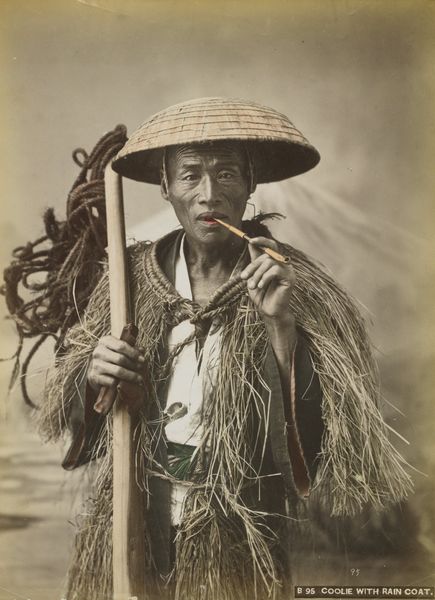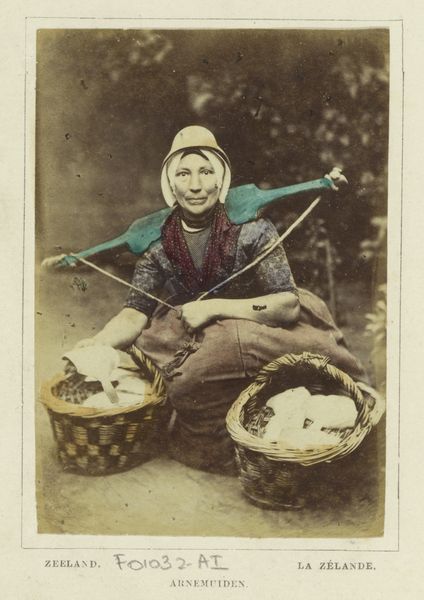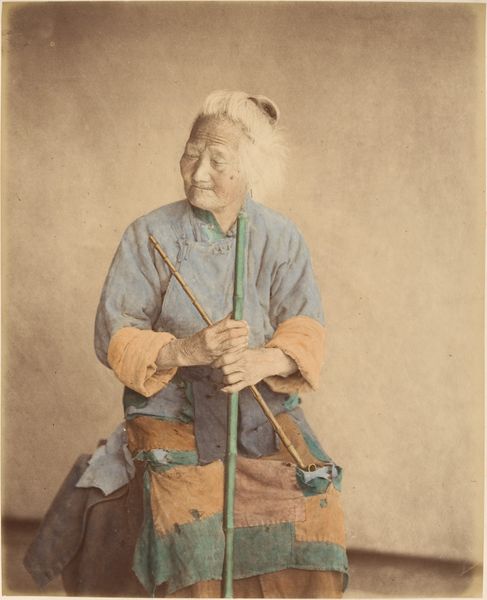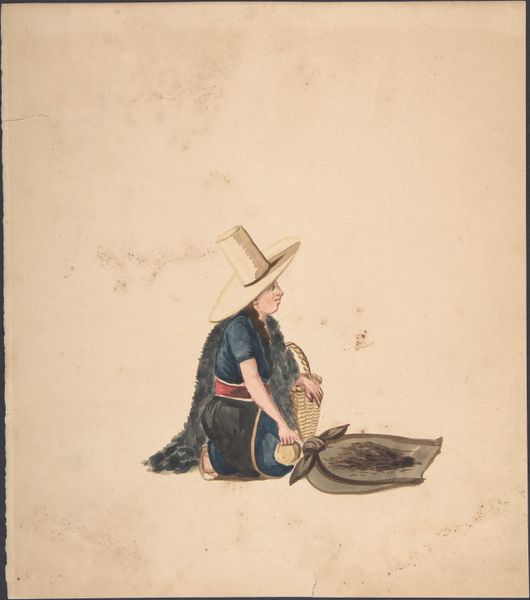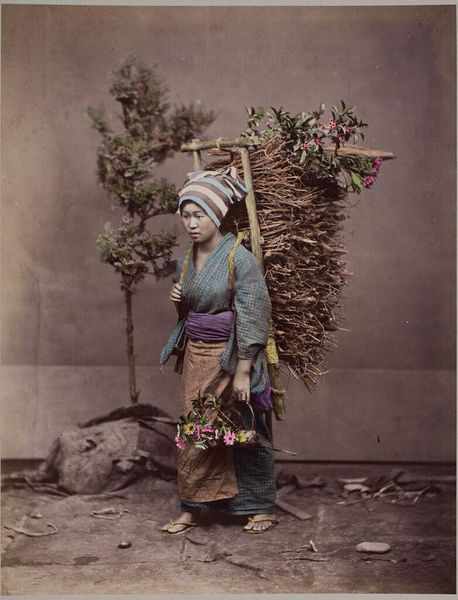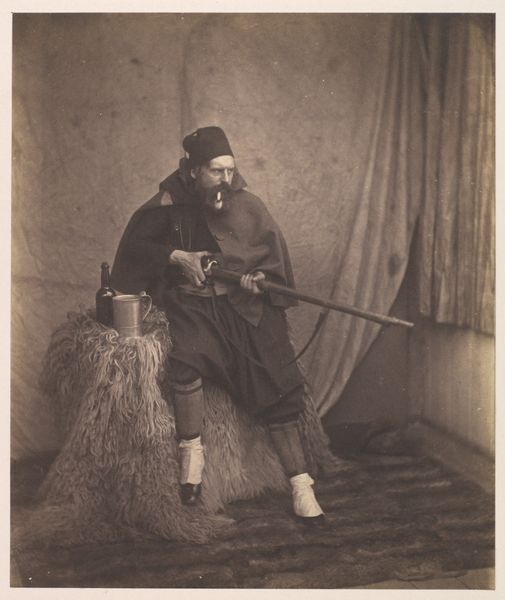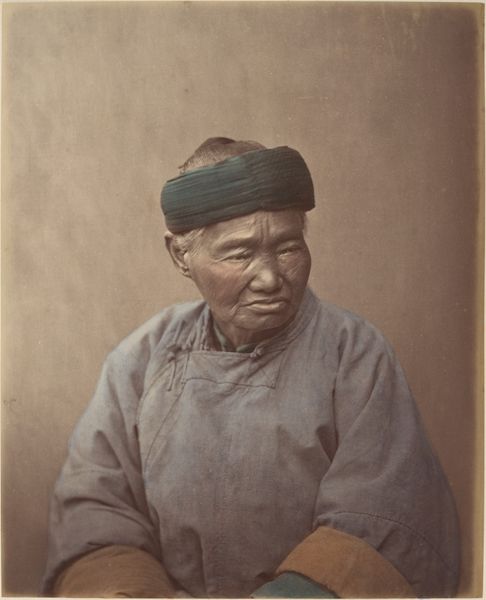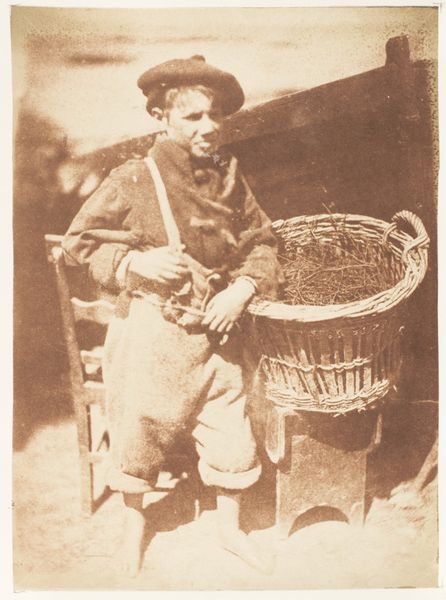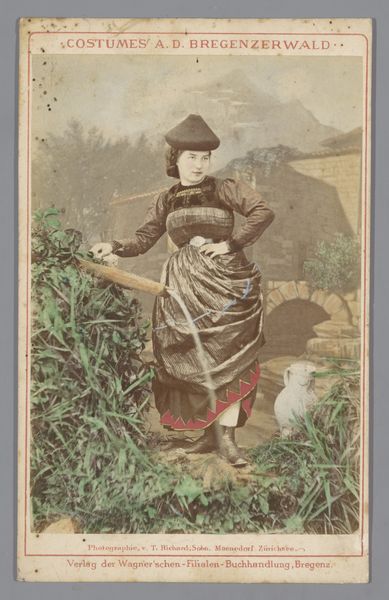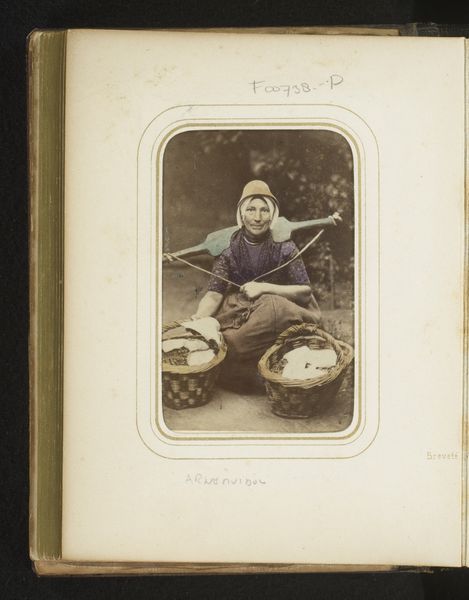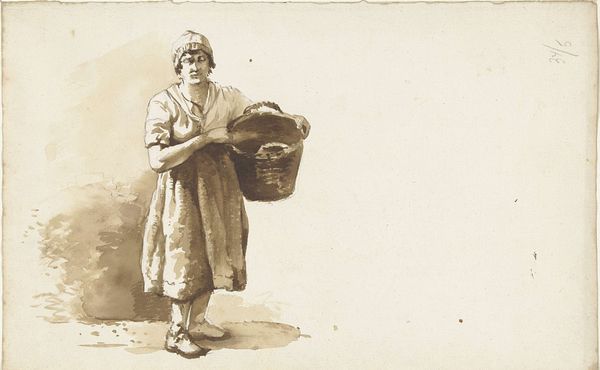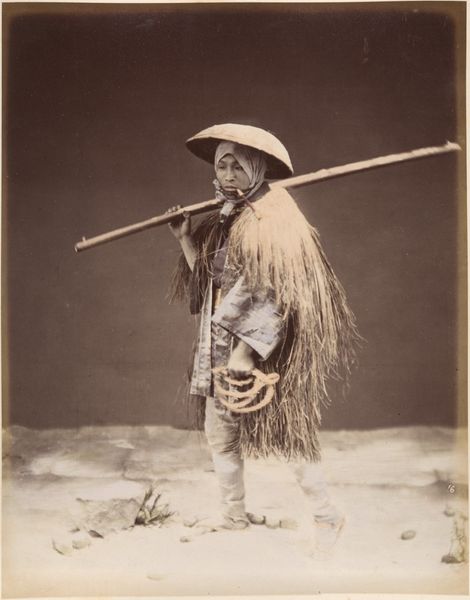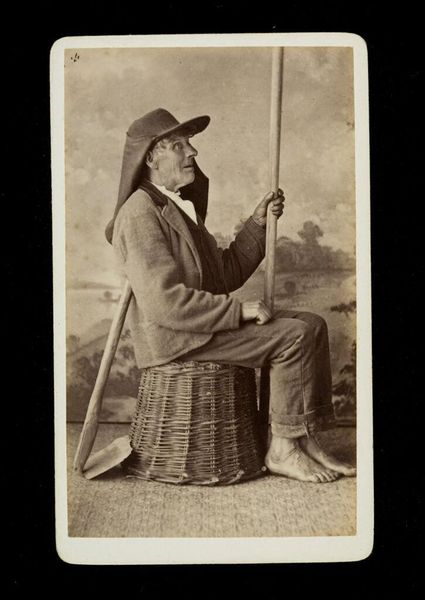![[Japanese Man Preparing a Fish] by Suzuki Shin'ichi](/_next/image?url=https%3A%2F%2Fd2w8kbdekdi1gv.cloudfront.net%2FeyJidWNrZXQiOiAiYXJ0ZXJhLWltYWdlcy1idWNrZXQiLCAia2V5IjogImFydHdvcmtzLzRhMjJiNmU3LTkyZDgtNDJjOS04MjkyLTAxNzM5YjlkMDE0MS80YTIyYjZlNy05MmQ4LTQyYzktODI5Mi0wMTczOWI5ZDAxNDFfZnVsbC5qcGciLCAiZWRpdHMiOiB7InJlc2l6ZSI6IHsid2lkdGgiOiAxOTIwLCAiaGVpZ2h0IjogMTkyMCwgImZpdCI6ICJpbnNpZGUifX19&w=3840&q=75)
Dimensions: 25.2 x 19.9 cm (9 15/16 x 7 13/16 in.)
Copyright: Public Domain
Curator: Welcome. Here we have Suzuki Shin'ichi's albumen print, "[Japanese Man Preparing a Fish]," created sometime in the 1870s. Editor: It has such a still quality to it, doesn't it? Almost meditative. The sepia tones create a wonderful, somber mood. Curator: Indeed. Suzuki's approach uses deliberate staging within a studio environment, highlighted by the painted backdrop—a seemingly crucial aspect of the composition. The contrast of the neutral foreground and backdrop heightens the focal point of the fisherman and his tools. Editor: And consider the layers it presents – not only in the tones, but in how the photographer seems to be deliberately engaging with Western views of Japan, performing orientalism to appeal to certain consumers. He’s crafting an identity here. The controlled setting is evidence. This is for a Western audience. Curator: Certainly. Note the careful construction— the arrangement of the fisherman and tools—it seems intentionally positioned against this idealized vision of the Japanese landscape. Suzuki seems less focused on immediate reportage and more interested in crafting carefully constructed tableaus of Japanese life. The fish he's preparing is also striking in form. Editor: It's all rather performative, don't you think? There is the carefully arranged fish and wooden containers. Each piece contributes to this crafted visual identity—a presentation rather than an unvarnished depiction of labor. How would this image been used or displayed? Curator: Likely disseminated widely to tourists and consumers of Japanese artwork and goods at that time. Suzuki and other artists often worked for export studios, contributing to the image of Japan consumed by the West. Editor: So, what we see is less about documenting reality, but an intriguing case study in the visual construction of identity for external audiences, crafted within a specific historical and political framework. Curator: Precisely, the albumen print functions as a visual commodity in a globalized world, highlighting how even documentary forms like photography were used to disseminate ideas about a culture, sometimes informed by outsiders’ perceptions. Editor: I think it forces us to consider whose view is truly represented in this piece, or perhaps whose expectations it reinforces. Thank you.
Comments
No comments
Be the first to comment and join the conversation on the ultimate creative platform.
